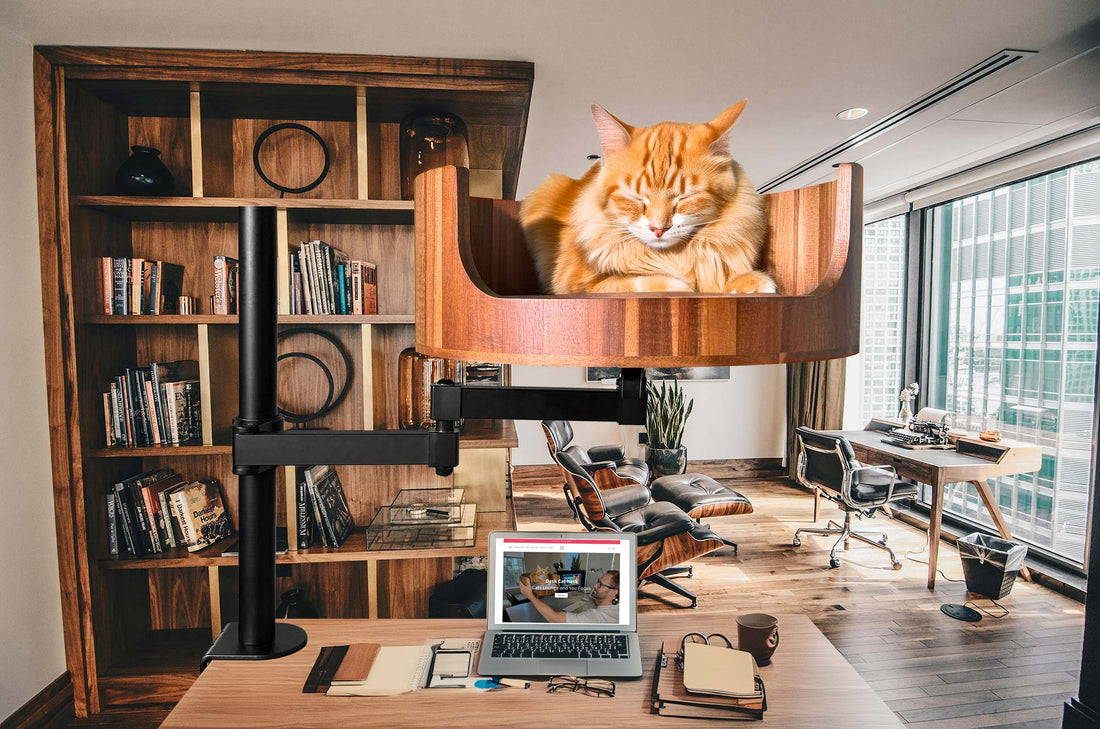
What Does It Mean When My Cat Wags Her Tail?
Share
For most cat owners, it can be quite confusing when their feline friends start wagging their tails. Is it a sign of happiness, playfulness, or something else entirely? In this article, we will delve into the meaning behind a cat's tail wagging and what it may indicate about their current mood or intentions.
Understanding cat behavior is essential for fostering a harmonious relationship with our furry companions. By deciphering the subtle cues they give us, we can better respond to their needs and provide a conducive environment for them to thrive. In this article, we will explore the various reasons why a cat may wag its tail, from expressing excitement or agitation to signaling a warning or discomfort. So next time you see your cat flicking its tail, you will be equipped with the knowledge to interpret what they are trying to communicate.
1. A cat wagging her tail can indicate various emotions, such as agitation, excitement, or aggression.
2. Understanding your cat's body language and tail movements can help you decipher her mood and respond appropriately.
3. Slow, gentle tail swishing can signal contentment, while rapid, vigorous wagging may indicate irritation or stress.
4. It's essential to consider other aspects of your cat's behavior, such as vocalizations and body posture, to accurately interpret tail wagging.
5. Paying attention to your cat's tail language can strengthen your bond and improve communication with your feline companion.
Understanding Cat Tail Behavior
Common Reasons Why Cats Wag Their Tails
Signs of Distress in Cats' Tail Wagging
Frequently Asked Questions
Why does my cat wag her tail?
Cats wag their tails for a variety of reasons. It can indicate excitement, annoyance, or frustration. If your cat is wagging her tail rapidly, she may be stressed or agitated. It's important to pay attention to other body language cues to determine the root of the tail wagging.
Is tail wagging always a bad sign?
Not necessarily. Some cats will wag their tails when they are feeling playful or happy. It's important to observe your cat's overall behavior and body language to decipher the meaning behind the tail wagging.
Should I be concerned if my cat wags her tail while lying in her Desk Cat Nest?
If your cat is lounging comfortably in her Desk Cat Nest and casually wagging her tail, it may simply be a sign of contentment or relaxation. However, if she appears tense or is wagging her tail aggressively, she may be feeling uncomfortable or threatened.
How can I help my cat if she is wagging her tail due to stress or agitation?
If your cat is exhibiting signs of stress or agitation through tail wagging, it's important to create a calm and safe environment for her. Provide a quiet space, plenty of toys and scratching posts, and try to minimize any sources of stress or anxiety in her environment.
In conclusion, understanding why your cat wags her tail is important for interpreting her behavior. By providing a comfortable and secure environment for your cat, such as a Desk Cat Bed, you can help alleviate stress and anxiety that may be causing her to display this behavior. The Desk Cat Bed offers a cozy space for your cat to relax and feel safe, promoting overall well-being and reducing the likelihood of tail wagging. Investing in a Desk Cat Bed is a valuable choice that will benefit both you and your feline friend.



















































